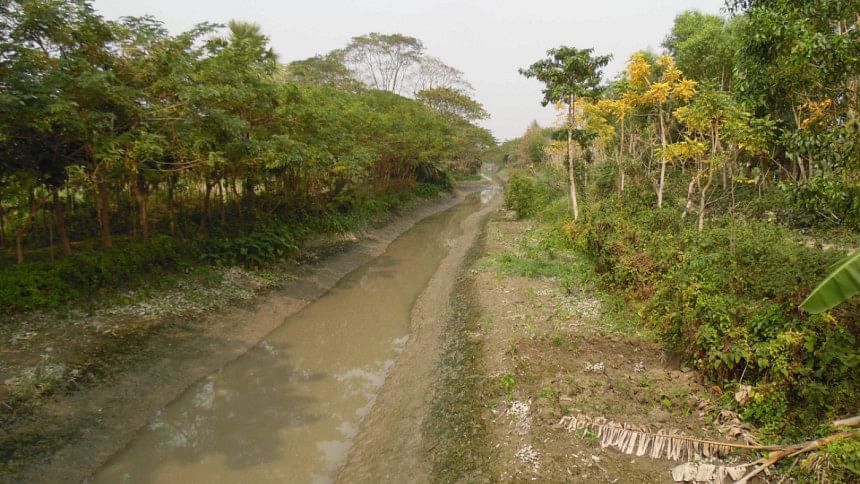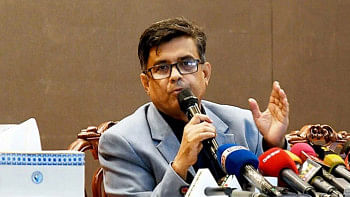A nearly extinct Dhanshiri

"I shall return once more to the banks of the Dhanshiri," wrote poet Jibanananda Das, "Perhaps not as a man, but in the guise of a white hawk or shalik." Unfortunately, were Das to return as either man or bird to experience the beauty of this most poetic of rivers, he must be disappointed. Clogged by silt and plagued by land grabbing, the Dhanshiri River has all but dried up.
Only a decade and a half ago the Dhanshiri still flowed with strong currents. It was teeming with fish, and sailboats routinely plied its waters. The 14 kilometre river which flows from Rajapur to Jhalakathi town links the Jangalia River to the broad Sughandha, and a century ago even ships en-route from Dhaka and Chittagong to Mongla used the waterway.
"The river used to be very wide with high waves and mighty currents," says Md Abdul Jalil, retired assistant headmaster of nearby Bagri High School, while standing on the Dhanshiri's bank. "There were all sorts of boats, even fishing boats, when I was young."
Jalil can recall how his father and grandfather used to carry goods by steamer from Kolkata via the Dhanshiri.
"The river is of vital importance for agriculture in the riverbank villages and it's linked to many canals that were dug from the river," says Abu Bakar Siddik, Jhalakathi's deputy director of agriculture. The irrigation of thousands of hectares will be badly affected if the river is lost completely, he warned.
Yet the Dhanshiri is on the verge of disappearing.
"We don't get enough water for agriculture in the dry season," says Mokammel, a farmer in Bagri. "In the past it was available but now there's a crisis of water in the river."
"Much of the river is only knee-deep," says deputy director of fisheries in Jhalakathi, Md Rezaul. "There used to be plenty of fish but now there are hardly any. For siltation and land grabbing the river will soon lose its current."
Retired fisherman Rafique meanwhile, says that over a hundred fishermen once earned their livelihoods on the Dhanshiri, but nowadays there are none. "Immediate action is needed," he said, "to stop the river disappearing altogether."
One decisive hit to the river's health came in 1986 when the then-government allotted one of its river chars (landmass emerging from riverbed) to build Guchchha Gram, a settlement for landless people. A second such project named Ashrayan on Dhanshiri's bank was completed in 1998.
"The two housing projects are major reasons for the river dying," says Md Jamal Uddin, a lecturer of soil and environment science at Barisal University. "If the river completely disappears the ecological balance of the area will be badly affected."
Newly appointed deputy commissioner to Jhalakathi, Md Mizanul Haque Chowdhury commented that he recently visited the river and intends to write to the Water Development Board to recommend dredging. "I also intend to take quick action to recover grabbed river lands," he says.
Jibanananda Das once celebrated the Dhanshiri, ensuring its name resonated in many a Bangladeshi heart into posterity. But these days the river's future is not in the hands of the poet or most of his admirers. The task of saving the Dhanshiri now lies with decision-makers, who will ultimately decide what Das, were he to return in the future as either man or bird, will see.

 For all latest news, follow The Daily Star's Google News channel.
For all latest news, follow The Daily Star's Google News channel. 



Comments